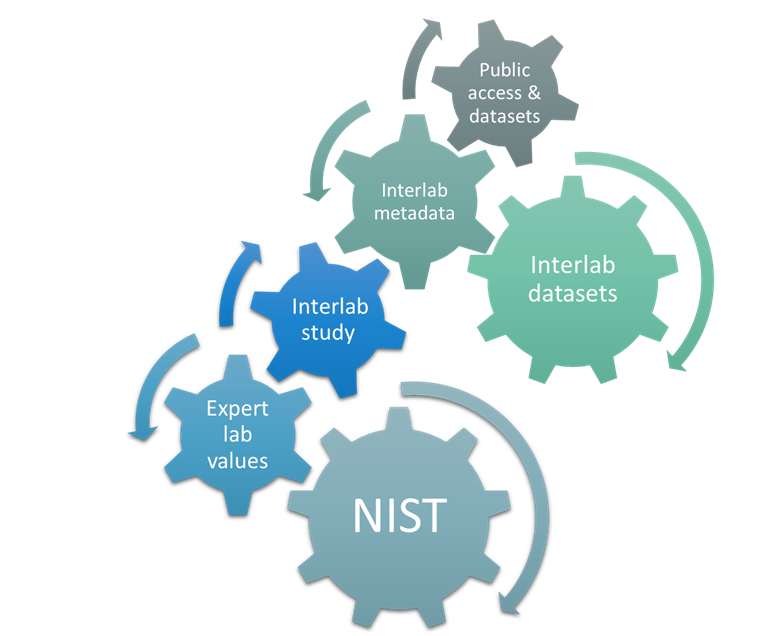Summary
- Design, generate, and evaluate cell and DNA based control materials and test via interlab analysis.
- Control materials will be used as benchmarks for assessing next-generation sequencing (NGS) pipelines and other platforms intended to identify induced genome editing events.
- Design and conduct controlled evaluations of existing assays for quantifying on- and off-target genome editing, with a robust and optimal experimental design aimed at assessing the sources of variability, repeatability, and reproducibility within an assay.
INTENDED IMPACT:
- Improved understanding of and confidence in detecting and quantifying on- and off-target genome editing
- Developed shared genome editing physical benchmark materials for assay qualification
Description
Genome editing technologies are able to produce DNA sequence changes of a variety of sizes and at a variety of frequencies in a population of edited cells. Having increased confidence in reliably detecting the sequences generated by a genome editing process was a need area identified.
Project 1: GIAB Mixture Study
Project Overview:
The GIAB (Genome in a Bottle) Mixture Study is a blinded interlab study designed to leverage highly characterized GIAB cell lines to test assay capabilities to accurately report variant size and frequency with documented processes, baseline data, and benchmark data by providing interlab participants DNA and cell mixtures representing a variety of DNA sequence benchmarks.
Interlab participants were provided a list of ‘Positions of Interest’, but were blinded to the genomes used, the variant(s), and the variant frequencies. Interlab participants performed DNA detection using processes and workflows relevant to their normal operations for detecting variants post genome editing.
Technologies assessed within the interlab include:
- bulk DNA short read NGS
- bulk DNA long read NGS
- single cell NGS
- genome wide DNA imaging
- targeted DNA probe imaging
- capillary electrophoresis fragment analysis
Reporting includes information surrounding:
- Variant size (SNV to indels 10s of kb)
Variant frequency (~ 0.1% - 10s of %; with two optional samples of lower frequency)

Project Progress:
- The mixture samples were generated by NIST and qualified for sequence and variant frequencies unblinded by NIST and expert control labs.
- NIST bottled and shipped the mixture samples to interlab participants in relevant formulations for their technology (purified DNA mixtures or cell mixtures).
- Datasets along with defined structured metadata have been received by NIST and are currently undergoing verification and analysis.
- Upon study conclusion results will be published and study data will be made publicly available.
Project 2: Engineered Cell Controls
Project Overview:
- Develop a set of clonal cell engineered controls (DNA + cells)
- Engineer DNA and cell controls with a variety of DNA sequence benchmarks that can represent some of the complexity of a genome editing output.
- Deeply characterize the sequence at engineered target genomic positions.
Project Progress:
Engineering and genomic characterization of clonal cell lines representing an allelic series of variants is in-progress.

